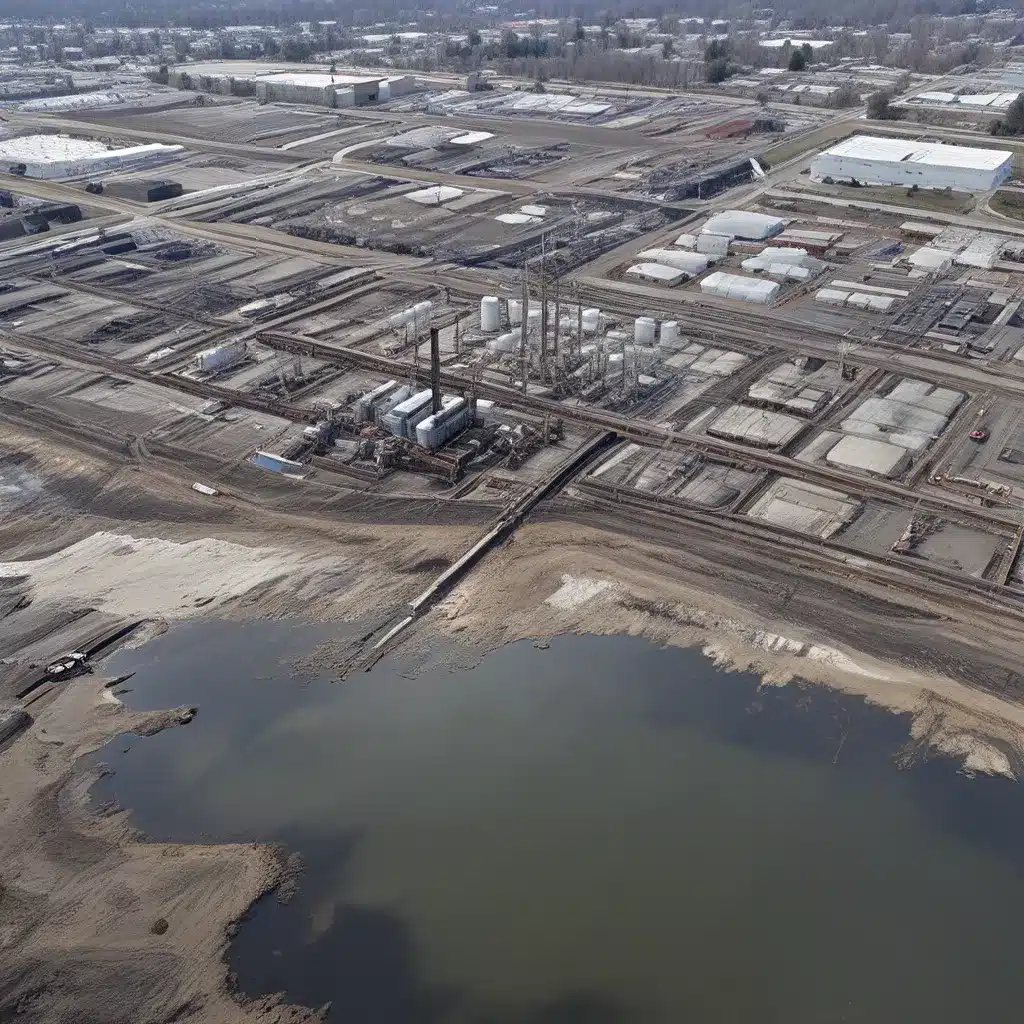
Ah, PFAS – those pesky per- and polyfluoroalkyl substances that have been causing quite a headache for manufacturers and environmental regulators alike. If you’re scratching your head, wondering how to navigate this tangled web of compliance and cleanup, you’re not alone. But fear not, my friends, for I’m about to take you on a journey through the murky waters of PFAS remediation, armed with some hard-earned insights and a healthy dose of humor.
The Regulatory Labyrinth
Let’s start with the basics – PFAS regulations are a veritable minefield, constantly shifting and evolving across different states and at the federal level. It’s like trying to keep up with the latest TikTok dance craze, but with much higher stakes. Manufacturers find themselves in a precarious situation, prioritizing which state regulations to focus on while simultaneously trying to adhere to federal mandates. It’s enough to make your head spin faster than a teenager on a sugar high.
But fear not, I’ve got a trick up my sleeve. The secret? Embrace the TSCA Inventory approach. This one-time data collection effort covers all the PFAS used in U.S. commerce, making it a strategic choice for manufacturers looking to streamline their compliance efforts. It’s like finding the cheat codes to a video game – suddenly, that overwhelming maze of regulations becomes a lot more manageable.
The Trailblazers and the Followers
Now, let’s talk about the trailblazers – the states that are really shaking things up when it comes to PFAS. Maine, for example, made history by becoming the first state to ban non-essential PFAS use in all products, effective from 2030. Meanwhile, Minnesota is following in Maine’s footsteps, implementing reporting obligations for products containing intentionally added PFAS.
But wait, there’s more! California is taking a multi-faceted approach, with regulations spanning everything from apparel to cookware. And let’s not forget Michigan, where PFAS use in food packaging is restricted, and fire-fighting foams are a big no-no.
It’s like a game of regulatory leapfrog, with states trying to one-up each other in the race to tackle PFAS head-on. And you know what they say, “the early bird catches the worm” – or in this case, the early state catches the compliance conundrum.
The Technical Tango
But let’s not forget the technical side of things. When it comes to PFAS assessment and remediation, environmental professionals are really stepping up their game. It’s like a high-stakes dance, where they have to navigate the intricate steps of soil and groundwater testing, all while trying to stay ahead of the ever-evolving industry standards.
And let me tell you, the ASTM E 1527-21 Phase I ESA standard is the new dance partner they’re all trying to master. It’s like the latest TikTok trend, but instead of learning the Renegade, they’re brushing up on their PFAS detection skills.
But the real challenge lies in the remediation efforts. PFAS are like the persistent ex-partner who just won’t go away – they have a circular life cycle that means the cleanup strategies need to be just as comprehensive. It’s like trying to untangle a ball of Christmas lights, but with higher stakes and a lot more science involved.
The Lending Limbo
Now, let’s talk about the lending sector – the ones who have to hold the proverbial bar while the rest of us try to limbo our way under the new PFAS regulations. Lenders are grappling with some tough questions, like how to balance the need for thorough due diligence with practical considerations of cost and feasibility.
It’s a delicate dance, I tell you. They’ve got to prioritize properties based on risk factors, while ensuring their due diligence processes can withstand the scrutiny of regulators and stakeholders. It’s like trying to walk a tightrope, but with a hefty loan portfolio and the future of the commercial real estate industry hanging in the balance.
The Path Forward
So, how do we navigate this complex PFAS landscape and come out on top? Well, my friends, it’s all about strategic thinking, technical expertise, and a healthy dose of collaboration.
First and foremost, it’s crucial to stay up-to-date with the latest regulations and industry standards. It’s like trying to keep up with the Kardashians – if you fall behind, you’ll be hopelessly lost in the drama.
Next, let’s talk about that technical expertise. Environmental professionals, lenders, and risk managers need to work together, pooling their knowledge and resources to tackle this challenge head-on. It’s like a well-choreographed dance number, with each performer playing a crucial role in the overall performance.
And let’s not forget the importance of legal expertise. Navigating the complexities of PFAS-related liabilities can be a minefield, so it’s essential to consult with legal experts early in the process. Think of it like having a personal bodyguard – they’ll help you avoid the pitfalls and ensure you emerge from the regulatory jungle unscathed.
Finally, let’s embrace the power of collaboration. By working together, we can find innovative solutions to the PFAS conundrum, sharing best practices and lessons learned along the way. It’s like a community-wide potluck, where everyone brings their unique dish to the table, and the end result is a feast of knowledge and camaraderie.
So, my friends, buckle up and get ready to dive into the world of PFAS remediation. It’s a wild ride, but with the right strategies and a healthy dose of teamwork, we can navigate these murky waters and emerge as environmental champions. And who knows, maybe we’ll even find a way to have a little fun along the way.
Remember, if you’re ever feeling overwhelmed, just remember the wise words of Inland Waters Inc.: “When it comes to PFAS, we’re the experts who can make the impossible, possible.”


